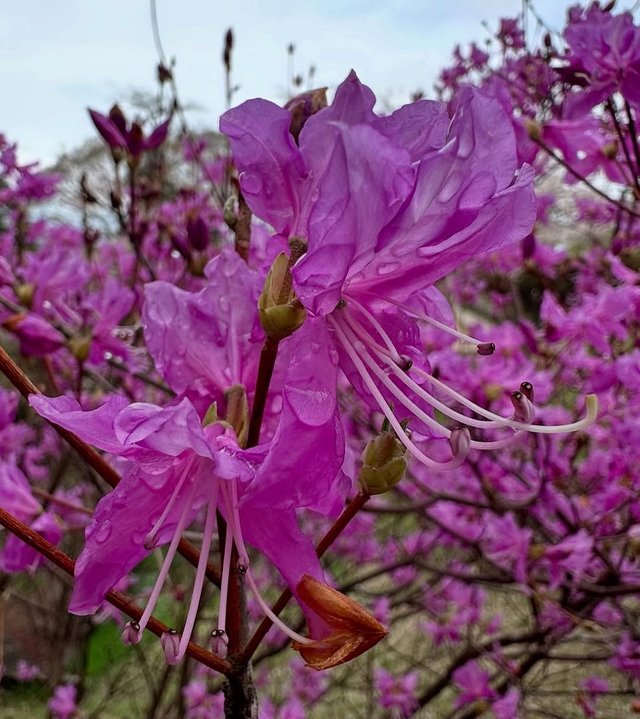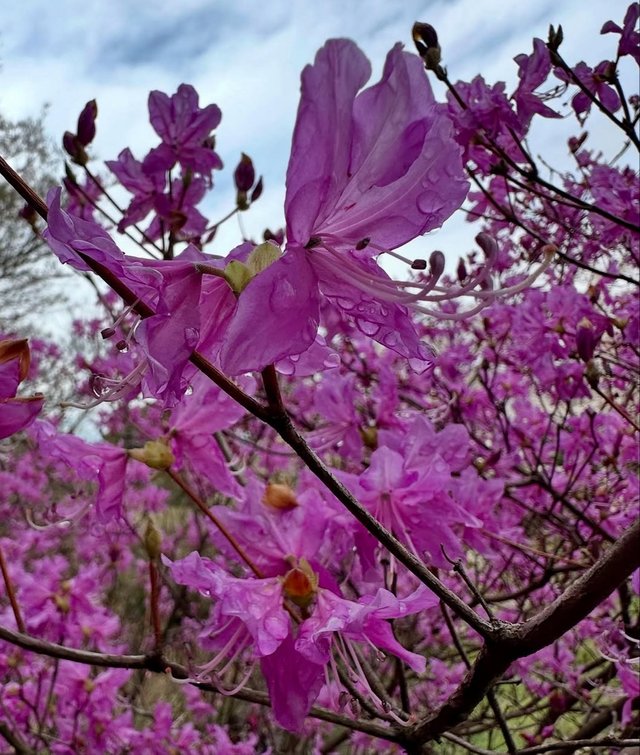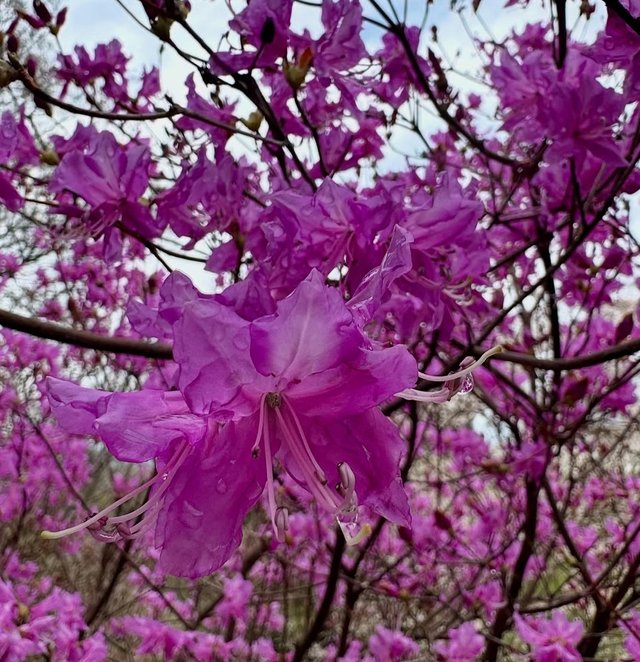Rhododendron Mucronulatum So Amazing Flower
Rhododendron mucronulatum: A Harbinger of Spring
Rhododendron mucronulatum, commonly known as the Korean Rhododendron or Korean Azalea, is a striking deciduous shrub cherished for its early blooming and ornamental value. Native to northeastern Asia—including Korea, China, Japan, and parts of eastern Russia—this species brings vibrant color to gardens and wild landscapes at a time when winter still lingers.
Botanical Profile
Scientific name: Rhododendron mucronulatum
Family: Ericaceae
Common names: Korean Rhododendron, Korean Azalea, Daurian Rhododendron
Native range: Korea, northern and eastern China, Japan, Russia Appearance and Growth Habit
Unlike many rhododendrons that retain their leaves year-round, R. mucronulatum is deciduous, dropping its foliage in the fall. This bare-branch state allows its early spring blooms to stand out dramatically. The shrub typically grows to a height of 4 to 6 feet, though in ideal conditions it can reach up to 10 feet.
Its leaves are elliptic to lanceolate, turning bronze or red before falling in autumn. But the real show begins in late winter to early spring, often as early as March or April depending on the climate. Clusters of bright pink to lavender flowers emerge on bare branches, creating a stunning visual contrast against still-dormant surroundings.
Flowers
Each flower of Rhododendron mucronulatum measures about 4–6 cm across and features five delicately flaring petals. These blooms appear before the leaves, maximizing their visual impact. The flowers are not only beautiful but also a vital early nectar source for pollinators just emerging from winter dormancy.




%20(10).jpeg)